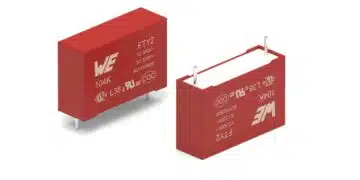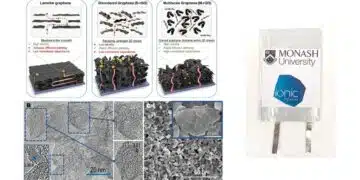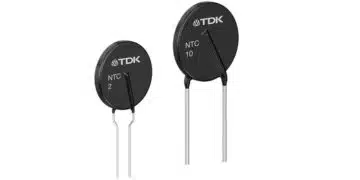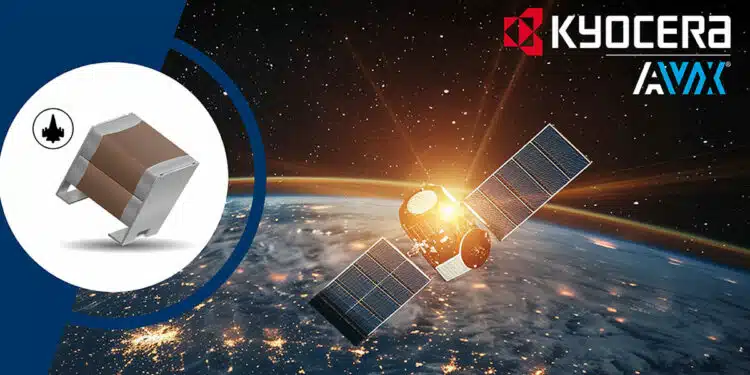The new KYOCERA AVX DSCC 25007 Mini BME ceramic capacitors stacks deliver an unparalleled combination of high-reliability, high-CV performance, substantial space and weight savings, and standard 100% Group A testing to satisfy military and aerospace industry demands.
KYOCERA AVX, a leading global manufacturer of advanced electronic components engineered to accelerate technological innovation and build a better future, released the new DSCC 25007 Mini BME Stacks — miniature, high-CV stacked X7R capacitors equipped with base metal electrodes (BME) and subjected to 100% Group A testing.
Designed to satisfy the growing need for compact and lightweight high-CV SMT capacitors in high-reliability military, aerospace, and space applications subjected to extreme operating conditions and harsh environments, the new fully-tested and -traceable DSCC 25007 Mini BME Stacks are based on its proven MIL-PRF-32535 X7R capacitors but completely unique to market.
The innovative series currently features two horizontally stacked X7R multilayer ceramic chip capacitors (MLCCs) in an EIA 2220 package that conserves board space, exhibits high-CV performance, and allows design engineers to downsize from currently available components. It also exhibits low ESR, low impedance, high current handling capabilities, and higher shock and vibration resistance than larger, heavier stacked capacitors. Additional features include a variety of lead frame options: standard two-foot J and L styles and paddle, or single bar foot, J and L styles optimized for improved vibration resistance — all equipped with tin/lead plating.
The initial release of the DSCC 25007 Mini BME Stacks is rated for operating temperatures extending from -55°C to +125°C and available with three voltage ratings (25, 50, and 100V) and nine capacitance values extending from 8.2–47µF ±20% tolerance.
Ideal applications for the series extend throughout the military, aerospace, and space industries and include satellites and satellite launchers, military missiles and aircraft, and input/output filtering circuits in power supplies.
“We’re very excited to release the new DSCC Mini BME Stacks, as they’re engineered to solve design challenges that a growing number of our aerospace and defense industry customers have been wrestling with for the past few years, so they’re currently unique to market — the one component capable of delivering what they need,” said Michael Conway, Senior Product Marketing Manager – High Reliability Products at KYOCERA AVX. “Thanks to their compact and lightweight stacked form factor equipped with BME technology, these Mini Stacks deliver an unparalleled combination of high-reliability, high-capacitance, and high-voltage performance and substantial space and weight savings.
“In fact, when compared to an equivalent 100V, 10µF part with precious metal electrodes (PME), they’re approximately 1/9th the weight and 1/6th the volume. And component weight directly impacts things like aircraft operating costs, satellite launch costs, and missile performance and operating costs. So, this is huge!
“The new DSCC Mini BME stacks also come standard with 100% Group A testing and — since they utilize the inserts from our proven M32535 line — are fully traceable as well, which satisfies another common request for our aerospace and defense industry customers.”
The new DSCC 25007 Mini BME Stacks are manufactured in a DLA approved, MIL-PRF-32535 qualified facility and are fully traceable and subjected to rigorous testing to ensure high reliability and performance in extreme conditions and harsh environments — specifically 100% Group A testing or 100% Group A and Group B testing for especially demanding designs with T-level requirements. Parts ship in waffle pack, tape and reel, or two-chip packaging.
Future expansions to the series will include a three-chip horizontal stack projected to launch by Q1 2026 followed by parts with three to 10 vertically stacked chips.
For more information about the new KYOCERA AVX DSCC 25007 Mini BME Stacks — miniature, high-CV stacked X7R capacitors with BME electrodes, check out the product page, Fast Facts brochure, and datasheet.
































